Butylated Hydroxyanisole (BHA)
Butylated Hydroxyanisole (BHA) Specification
- Structural Formula
- C H O
- Smell
- No Smell
- EINECS No
- 246-563-8
- Solubility
- Soluble in water
- Molecular Formula
- C H O
- Taste
- Odorless
- Molecular Weight
- 180.25 GSM (gm/2)
- Melting Point
- 48 - 63 c
- Storage
- Room Temperature
- Ph Level
- 5
- Boiling point
- 264 c
- Shelf Life
- 12 Months
- HS Code
- 29145000
- Chemical Name
- Butylated hydroxy anisole
- CAS No
- 25013-16-5 (mixture of isomers)
- Type
- Other
- Grade
- Industrial Grade
- Usage
- Used as an antioxidant and preservative in: Food and edible oils Cosmetics and pharmaceuticals Rubber and plastic industries Prevents oxidative rancidity and extends product shelf life
- Purity(%)
- 99%
- Appearance
- White Powder
- Physical Form
- Powder
Butylated Hydroxyanisole (BHA) Trade Information
- Minimum Order Quantity
- 25 Kilograms
- FOB Port
- ICD Vadodara
- Payment Terms
- Cash Advance (CA), Cash in Advance (CID)
- Supply Ability
- 10000 Kilograms Per Month
- Delivery Time
- 7 Days
- Sample Available
- No
- Sample Policy
- Contact us for information regarding our sample policy
- Packaging Details
- 25 kgs Drum
- Main Export Market(s)
- Asia, Australia, Central America, North America, South America, Eastern Europe, Western Europe, Middle East, Africa
- Main Domestic Market
- All India, South India, Central India, West India, North India, East India, Gujarat, Karnataka, Kerala, Lakshadweep, Mizoram, Meghalaya, Manipur, Andhra Pradesh, Bihar, Chandigarh, Daman and Diu, Goa, Jharkhand, Odisha, Punjab, Assam, Delhi, Dadra and Nagar Haveli, Andaman and Nicobar Islands, Arunachal Pradesh, Chhattisgarh, Haryana, Himachal Pradesh, Jammu and Kashmir, Madhya Pradesh, Maharashtra, Nagaland, Rajasthan, Sikkim, Tamil Nadu, Telangana, Tripura, Pondicherry, Uttar Pradesh, Uttarakhand, West Bengal
- Certifications
- ISO 9001,18001 and 45001
About Butylated Hydroxyanisole (BHA)
Butylated Hydroxyanisole (BHA) is an industrial-grade food preservative widely used in the food industry due to its high purity of up to 99%. It is presented as a white crystalline powder that is soluble in propylene glycol, soybean oil, and water, making it versatile for various applications. This product is non-poisonous and safe for food usage with a recommended maximum concentration of 1%. It has a shelf life ranging from 12 months to 3 years when stored at room temperature. With its EINECS No. 246-663-8 and CAS numbers 88-32-4 and 121-00-6, BHA is recognized for its ability to maintain the quality and freshness of food products. Its physical form and ease of storage make it highly desirable for manufacturers, distributors, and suppliers looking for efficient food preservation solutions.
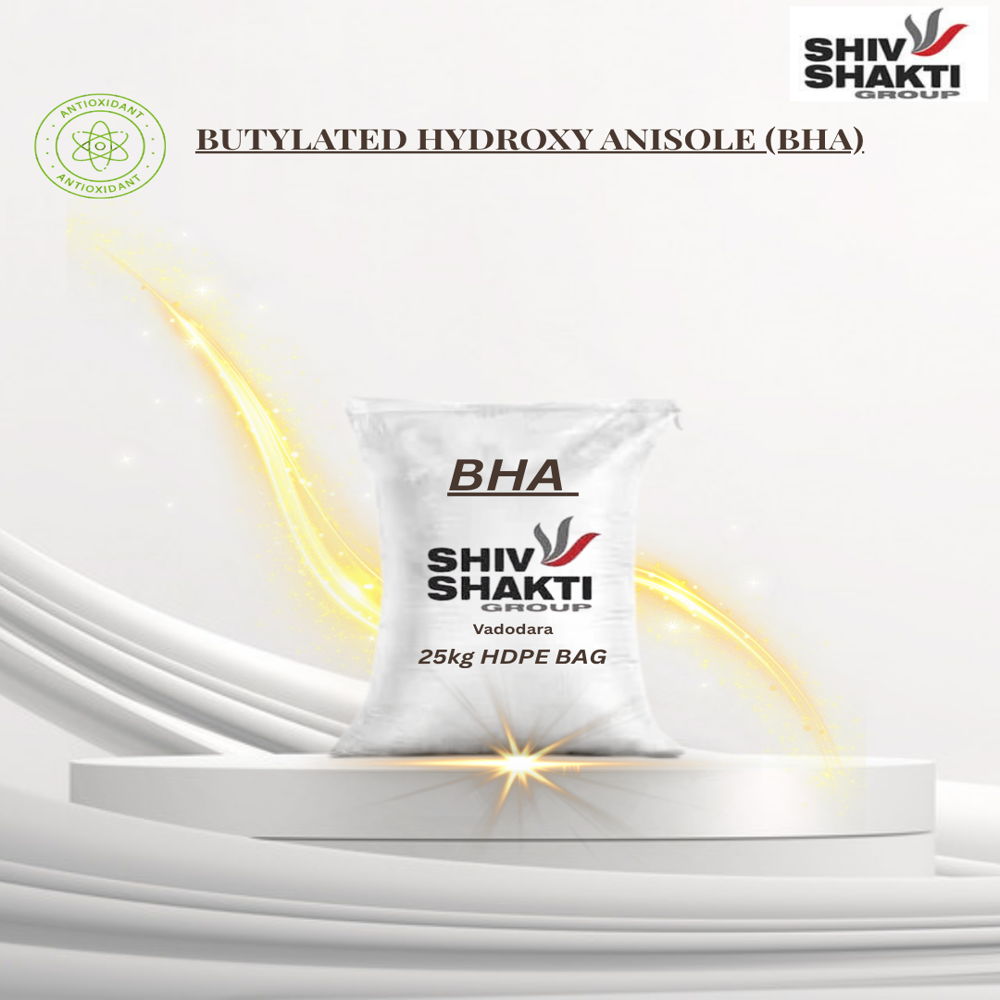
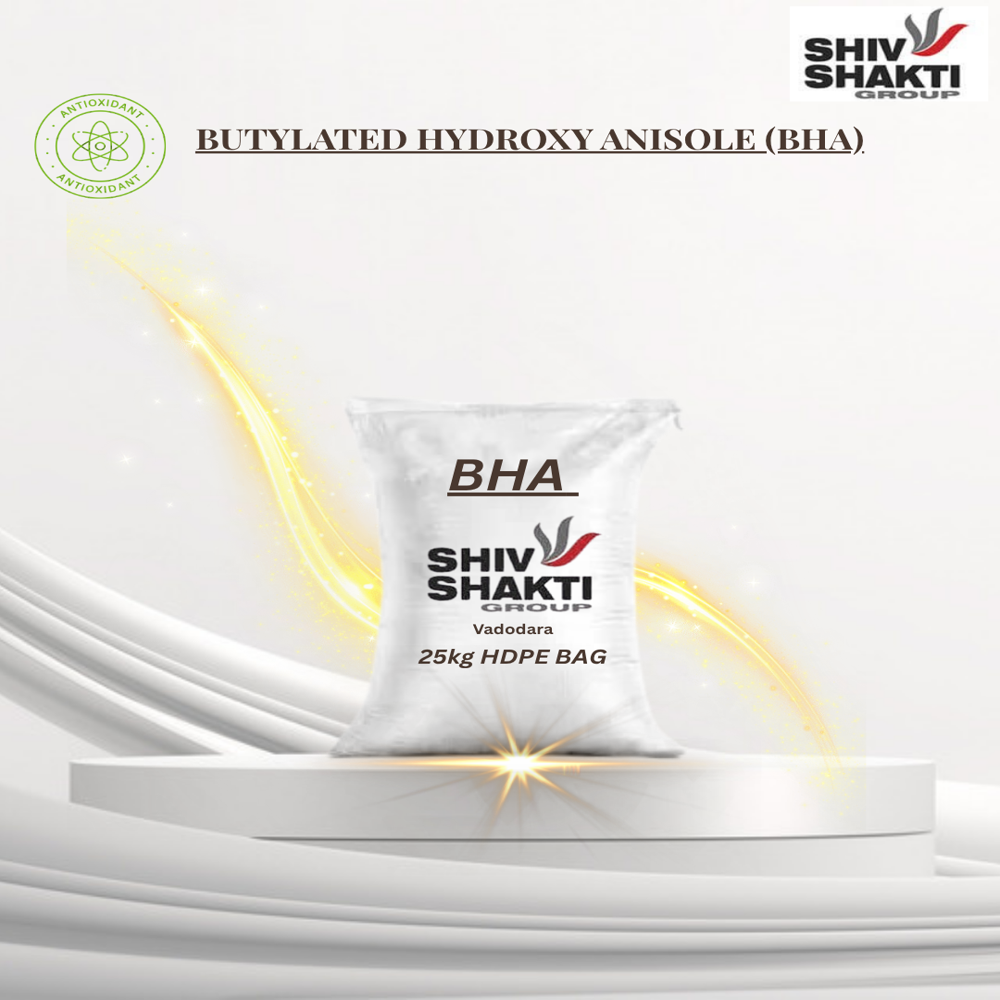
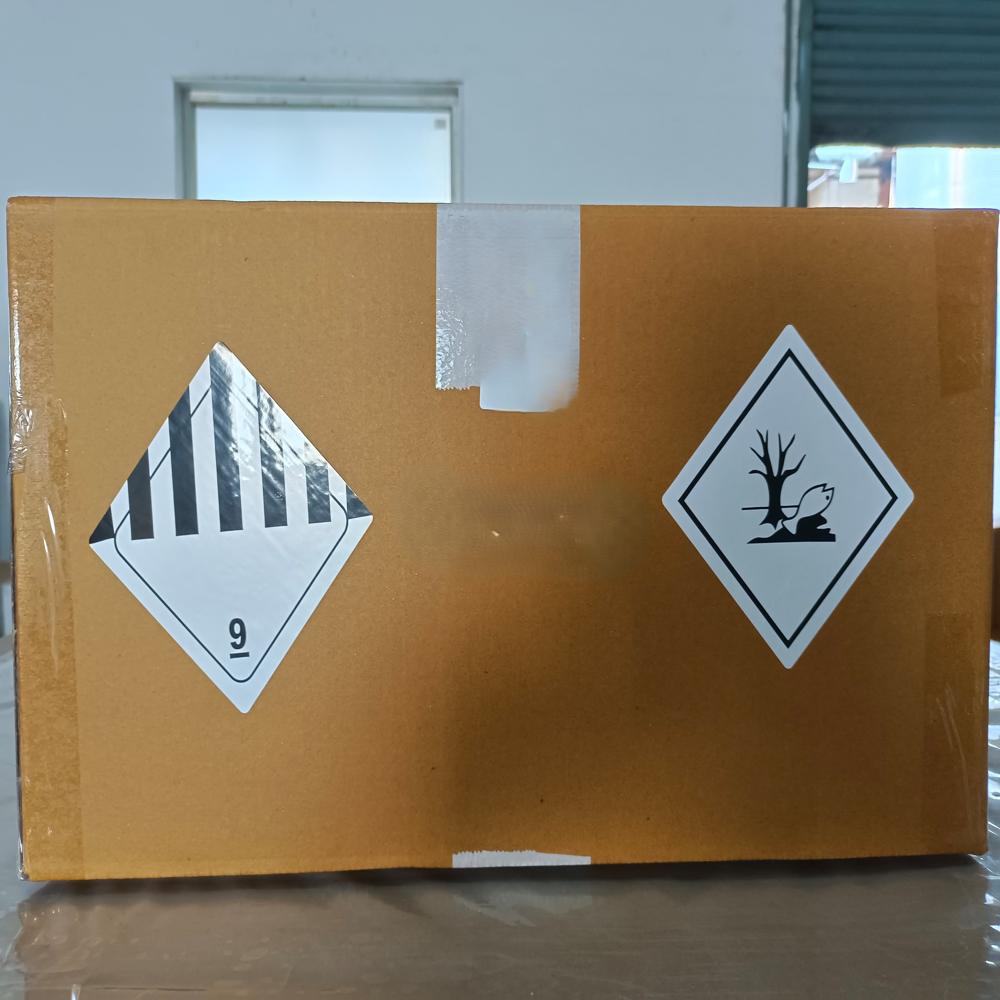
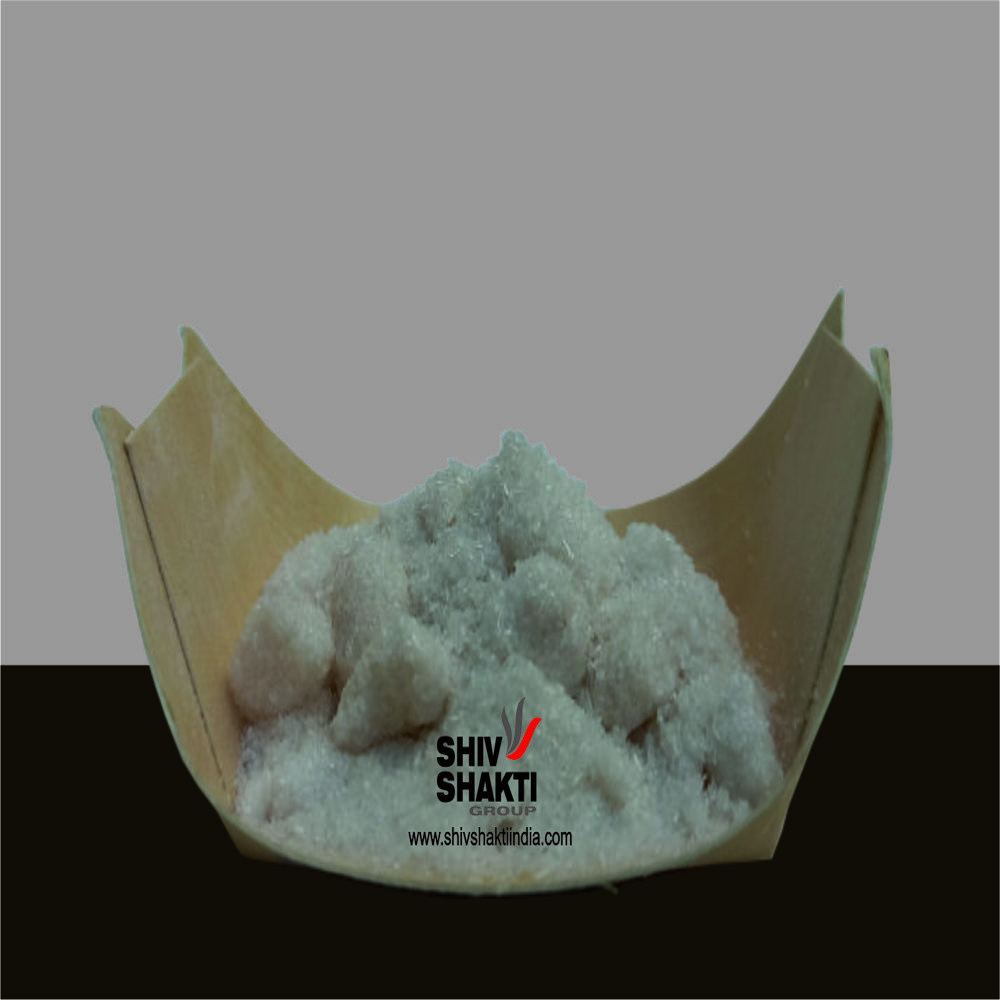
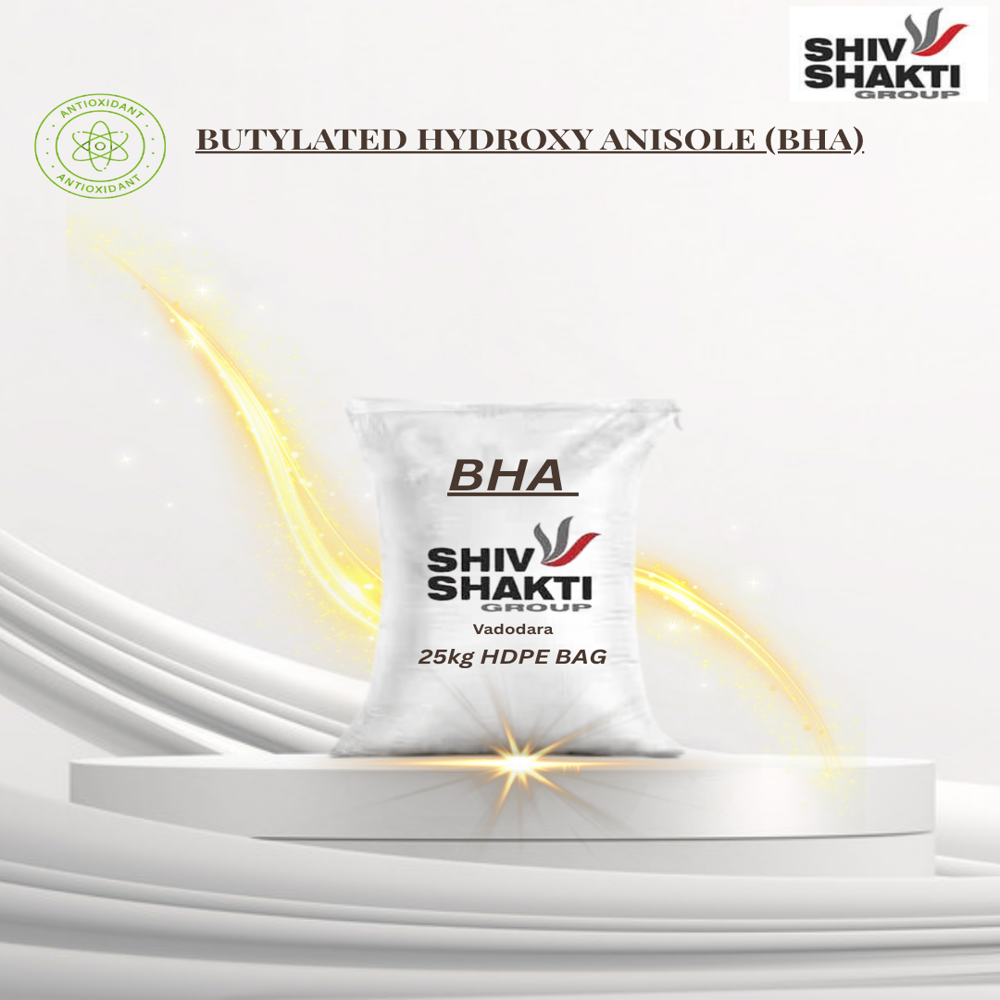
Price 1150.0 INR/ Kilograms
- Minimum Order Quantity
- 25 Kilograms
- Supply Ability
- 10000 Kilograms Per Month
- Delivery Time
- 7 Days
- Main Domestic Market
- All India, South India, Central India, West India, North India, East India, Gujarat, Karnataka, Kerala, Lakshadweep, Mizoram, Meghalaya, Manipur, Andhra Pradesh, Bihar, Chandigarh, Daman and Diu, Goa, Jharkhand, Odisha, Punjab, Assam, Delhi, Dadra and Nagar Haveli, Andaman and Nicobar Islands, Arunachal Pradesh, Chhattisgarh, Haryana, Himachal Pradesh, Jammu and Kashmir, Madhya Pradesh, Maharashtra, Nagaland, Rajasthan, Sikkim, Tamil Nadu, Telangana, Tripura, Pondicherry, Uttar Pradesh, Uttarakhand, West Bengal
- Main Export Market(s)
- Asia, Australia, Central America, North America, South America, Eastern Europe, Western Europe, Middle East, Africa
Tell us about your requirement

Price:
Quantity
Select Unit
- 50
- 100
- 200
- 250
- 500
- 1000+
Additional detail
Mobile number
Email
More Products in Food and Pharma Preservatives Category
Butylated Hydroxytoluene (BHT)
Price 400.0 INR / Kilograms
Minimum Order Quantity : 25 Kilograms
Ph Level : 5
Storage : Room Temperature
Boiling point : 265 C
Purity(%) : 99%
We exports in Russia, Europe, Gulf countries and African countries.



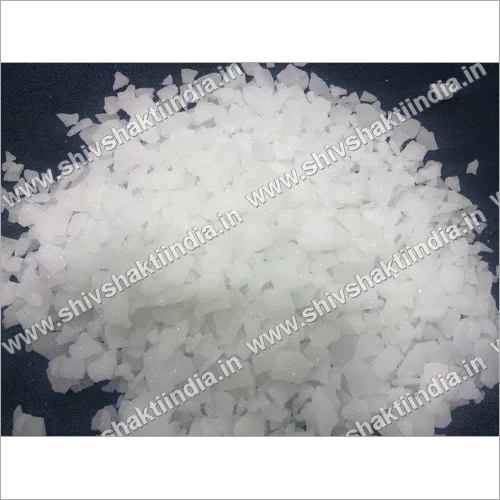

 English
English Spanish
Spanish French
French German
German Italian
Italian Chinese (Simplified)
Chinese (Simplified) Japanese
Japanese Korean
Korean Arabic
Arabic Portuguese
Portuguese